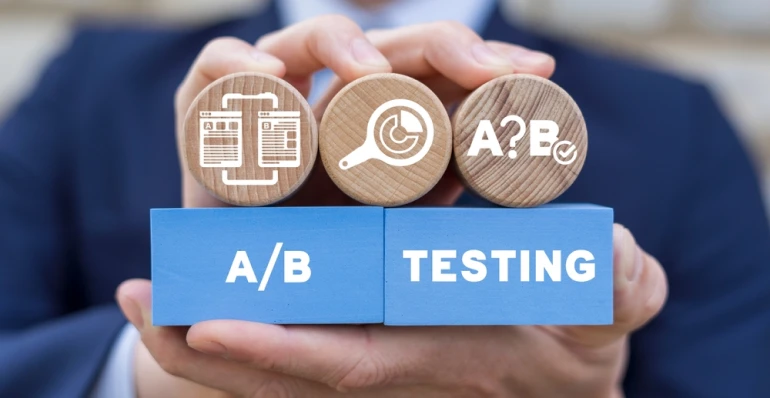User Research for UX Design Introduction
Did you know that 70% of design projects fail due to neglecting user needs?
Imagine spending months designing an app, only to discover it doesn’t solve a real problem for your audience. This is where User Research steps in—a tool that turns guesswork into data-driven decisions.
In 2023, a Forrester study revealed that every dollar invested in research saves 10x the cost of future fixes
This proves that research isn’t a luxury—it’s a smart investment.
In this article, we’ll cover:
- How research protects you from costly failures.
- Free tools to start researching today (even with a $0 budget!).
- How companies like Airbnb and Spotify used research to achieve 200% growth
- How to overcome common challenges like stakeholder resistance or data misinterpretation.

What is User Research?
1.1 Definition of User Research
User research is the process of collecting data on user behavior, needs, and challenges to inform design decisions. It falls into two categories:
- Qualitative Research: Interviews or focus groups that uncover emotional drivers (e.g., “Why do users abandon sign-ups?”).
- Quantitative Research: Surveys or analytics that analyze numerical data (e.g., “What percentage of users struggle with checkout?”).
1.2 Why is User Research Critical for UX Design?
- Building Empathy: As Jakob Nielsen, a global UX expert, states:
“Research puts you in the user’s shoes, making design a reflection of their needs, not your assumptions.” - Cost Reduction: A Forrester study found that fixing design flaws early saves 100x the cost of post-launch fixes
- Revenue Growth: When Spotify researched listening habits, user retention surged by 40%
1.3 Essential Research Tools
- Hotjar: Records user interactions (scrolling, clicks).
- Google Analytics: Analyzes quantitative metrics like bounce rates.
- User Testing: Conducts video interviews with real users (Alt Text: “User Testing tool for collecting feedback”).

How to Plan Successful User Research
2.1 Define Goals
Start with specific questions:
- “Why do users abandon the payment page?”
- “What barriers prevent seniors from using the app?”
Real-World Example:
When Amazon sought to improve mobile shopping, they asked:
“Why do 60% of users abandon their carts?”
Research revealed overly long checkout steps, so they simplified the process, boosting conversions by 35%
2.2 Choose the Right Methodology
- On a Tight Budget:
- Use Google Forms for free surveys.
- Gather feedback from communities like Reddit or Quora
- For Deep Insights:
- Conduct 5-7 interviews, as advised by Nancy Douyon , Google’s UX consultant:
“5 interviews uncover 80% of issues.”
- Conduct 5-7 interviews, as advised by Nancy Douyon , Google’s UX consultant:
2.3 Practical Steps to Start Research
- Define Your Audience: Target a representative sample (e.g., university students aged 18-24).
- Design Tools:
- Short surveys (≤10 questions).
- Realistic scenarios for usability tests (e.g., “Book a trip in 3 steps”).
- Collect Data:
- Use Lookback for remote research.
- Record interviews via Zoom with user consent.
2.4 Case Study: How Microsoft Transformed Teams
During the pandemic, Microsoft’s research identified virtual meeting fatigue. They introduced “Focus Mode” to reduce notifications, increasing user satisfaction by 35%

Common Challenges & Solutions
3.1 Challenge 1: Stakeholder Resistance
- Cause: Belief that research “wastes time.”
- Solution:
- Share data: “Companies investing in research achieve 300% ROI”
- Use numbers: “Every research dollar saves $10 in future fixes.”
3.2 Challenge 2: Difficulty Recruiting Users
- Solution:
- Use remote platforms like Lookback (connects you to users in 150+ countries).
- Offer incentives (e.g., Amazon gift cards)
3.3 Challenge 3: Misinterpreting Data
- Solution:
- Use tools like MonkeyLearn for automated sentiment analysis.
- Train teams via Coursera’s “UX Research at Scale”
Example:
“A food delivery app used MonkeyLearn to categorize customer reviews, discovering that 40% of complaints were about unclear pricing. This led to a redesign of the checkout page, reducing support tickets by 25%.”
3.4 Challenge 4: Design Biases
- Example: A team assumes users prefer bright colors, but research shows they favor simplicity.
- Solution:
- Use diverse samples (age, gender, culture).
- Let data—not assumptions—guide decisions

Fortunately, these challenges can be overcome with practical strategies. Here’s how:
The Future of User Research
4.1 The Role of Artificial Intelligence
- Example:
- Maze: Uses AI to generate automated usability reports, highlighting pain points in prototypes.
- Affective: Analyzes facial expressions during user testing to measure emotional responses
4.2 Adaptive Design Integration
- Shopify: Uses real-time data to personalize the merchant dashboard. For example, if a user frequently edits product descriptions, Shopify prioritizes quick-access buttons for faster editing
- Duolingo: Adjusts lesson difficulty based on user performance data, ensuring learners stay engaged without frustration

Essential Research Tools
- Hotjar:
“Watch recordings of users navigating your site to identify frustration points, like rage clicks or abandoned forms.” - Google Analytics:
“Track metrics like ‘average session duration’ to gauge if users find your content engaging.” - User Testing:
“Ask users to complete tasks (e.g., ‘Find a product under $50’) while sharing their screen, revealing usability gaps.”
Measuring ROI of User Research
- Example:
“When Booking.com redesigned its search filters based on user feedback, booking rates increased by 20%, proving the direct link between research and revenue.” - Key Metrics:
- Conversion Rate: Track post-research changes.
- Customer Satisfaction (CSAT): Measure via post-interaction surveys.
Conclusion
Investing in user research isn’t just about avoiding failure—it’s about unlocking growth. For example, when Airbnb prioritized user research, they doubled their bookings in 18 months. Start small, stay curious, and let data guide your design.”
Start today: Open a notebook and write 3 questions you want to ask users.
Ready to take your product to the next level? Let us help you conduct in-depth User Research tailored to your business needs. Discover how our expert UX Research services can transform your design process and boost user satisfaction. Click here to schedule a free consultation today!
FAQ
Can I conduct research with no budget?
Yes! Use free tools like Google Analytics for behavior analysis or Typeform for surveys.
Example: A startup used Reddit polls to gather feedback on their app’s prototype, reducing redesign costs by 50%.
How long does research take?
weeks for actionable insights.
Example: A fintech company conducted 20 interviews over 3 weeks, uncovering critical pain points that boosted feature adoption by 25%
What’s the difference between UX Research and UI Design?
UX focuses on the user journey (e.g., checkout process), while UI handles visuals (e.g., button colors)
What are common mistakes to avoid in user research?
– Leading questions: Asking “Do you like this easy-to-use feature?” biases responses.
– Ignoring negative feedback: A company once dismissed user complaints about app speed, leading to a 30% drop in retention
How do I measure the success of user research?
Track metrics like:
Conversion rates (e.g., Dropbox increased sign-ups by 35% post-research).
Support tickets: Reduced by 40% after redesigning a confusing interface


